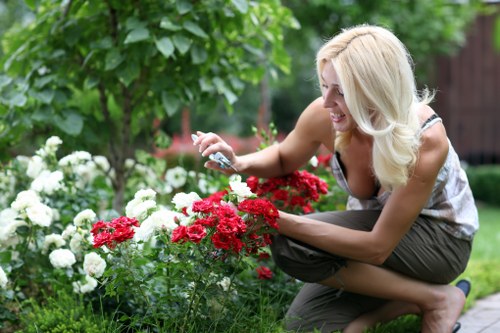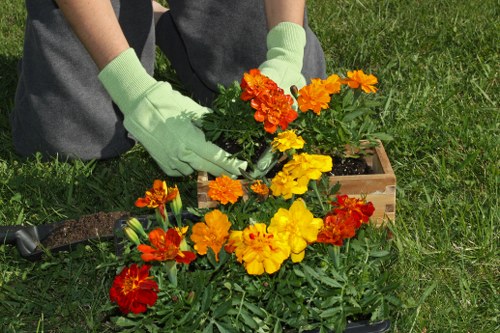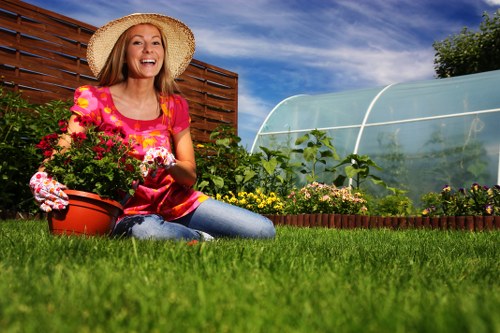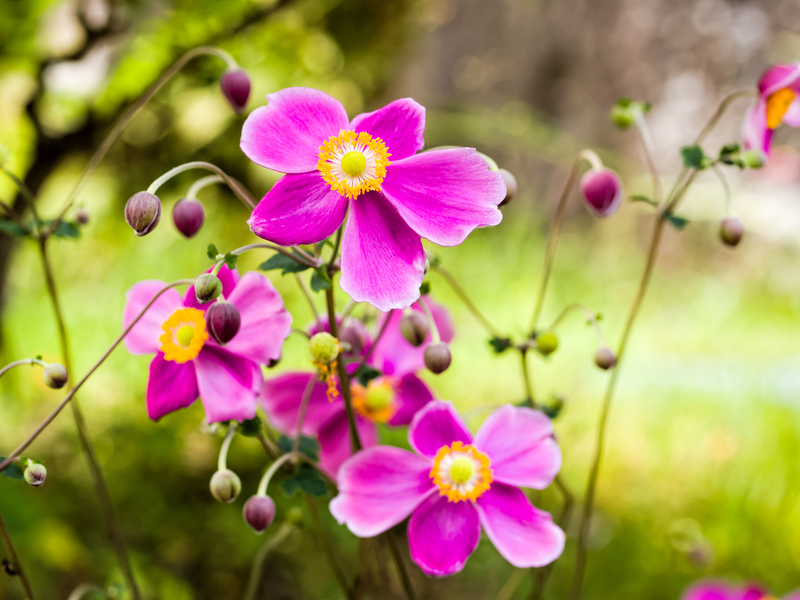Grass Cutting Maidenhead: Your Comprehensive Guide to a Beautiful Lawn

Maintaining a lush, green lawn in Maidenhead can be a rewarding experience, but it requires consistent care and the right techniques. Whether you’re a homeowner looking to beautify your garden or a property manager needing regular upkeep, understanding the essentials of grass cutting in Maidenhead is crucial.
Maidenhead’s climate, soil type, and local vegetation all play significant roles in how your lawn grows and how it should be maintained. Proper grass cutting not only enhances the aesthetic appeal of your property but also promotes a healthier, more resilient lawn.
In this article, we’ll explore the best practices for grass cutting in Maidenhead, the tools you need, and tips to keep your lawn looking its best all year round.
Understanding Maidenhead’s Climate and Its Impact on Your Lawn

Maidenhead enjoys a temperate maritime climate, characterized by mild winters and warm summers. This climate is ideal for growing a variety of grass types, but it also means that your lawn care routine needs to adjust throughout the year.
The average rainfall in Maidenhead ensures that grass receives adequate moisture, but it also means that drainage and avoiding waterlogging are important considerations when maintaining your lawn.
Additionally, the seasonal changes influence how often you should cut your grass. For instance, during the peak growing seasons in spring and summer, more frequent mowing is necessary to keep your lawn healthy and manicured.
Choosing the Right Grass Type for Maidenhead

Selecting the appropriate grass type is fundamental to successful lawn care in Maidenhead. Common grass types suited to this region include:
- Perennial Ryegrass: Fast-growing and durable, ideal for high-traffic areas.
- Fescue: Tolerates shade and drought, offering a rich green color.
- Kentucky Bluegrass: Known for its lush texture and resilience.
- Bentgrass: Perfect for fine lawns and smooth surfaces.
Each of these grass types has its own set of care requirements, so understanding their needs will help you maintain a vibrant lawn.
Essential Tools for Effective Grass Cutting

Having the right tools is essential for efficient and effective grass cutting. Here are some must-have tools for maintaining your Maidenhead lawn:
- Lawn Mower: Choose between a push mower, self-propelled mower, or a riding mower based on your lawn size.
- String Trimmer: Ideal for edging and reaching areas that the mower can’t.
- Lawn Edger: Helps create clean lines along pathways and garden beds.
- Rake: Essential for removing debris and thatch from your lawn.
- Lawn Aerator: Improves soil health by allowing air, water, and nutrients to penetrate the grass roots.
- Wheel Hose: For watering your lawn efficiently.
Investing in quality tools not only makes the task easier but also ensures a better finish for your lawn.
Grass Cutting Techniques for a Healthy Lawn

Proper grass cutting techniques are vital for maintaining a healthy and attractive lawn. Here are some key practices to follow:
- Mowing Frequency: During the growing season, mow your lawn once a week. In slower growth periods, reduce the frequency.
- Cutting Height: Generally, set your mower to cut no more than one-third of the grass blade’s height at a time. This helps prevent stress on the grass.
- Sharp Blades: Always keep your mower blades sharp to ensure clean cuts, which reduce the risk of disease.
- Pattern Variation: Change your mowing pattern regularly to prevent grass from leaning in one direction and to ensure even growth.
- Grass Clippings: Leave grass clippings on the lawn as they provide natural fertilizer, or collect them if they are too thick.
Adhering to these techniques will promote sturdier, greener grass that can better withstand pests and diseases.
Seasonal Lawn Care Tips for Maidenhead

Each season presents unique challenges and opportunities for your lawn in Maidenhead. Here’s how to adjust your grass cutting and overall lawn care routine throughout the year:
Spring
- Start Mowing: As the grass starts to grow, begin regular mowing.
- Aeration: Aerate the lawn to relieve soil compaction.
- Fertilization: Apply a balanced fertilizer to support growth.
Summer
- Increase Watering: Ensure your lawn receives adequate moisture during hot months.
- Mow Higher: Raise the mower height to provide shade to the roots.
- Pest Control: Monitor and manage pests that can damage the grass.
Autumn
- Reduce Mowing: As growth slows, decrease the frequency of mowing.
- Leaf Removal: Keep the lawn clear of fallen leaves to prevent mold and fungus.
- Fertilization: Apply a higher phosphorus fertilizer to prepare the grass for winter.
Winter
- Minimal Mowing: Only mow when necessary, leaving the grass slightly longer.
- Protect the Lawn: Avoid heavy foot traffic to prevent damage to dormant grass.
- Equipment Maintenance: Clean and service your grass cutting tools for next season.
By tailoring your lawn care practices to each season, you ensure that your grass remains healthy and vibrant throughout the year.
Common Lawn Problems and Solutions

Even with the best care, lawns can encounter issues. Here are some common problems faced by residents of Maidenhead and how to address them:
- Weed Infestation: Use targeted herbicides and maintain proper mowing practices to reduce weed growth.
- Disease: Ensure good drainage and avoid overwatering to prevent fungal diseases.
- Pest Damage: Identify the pests and apply appropriate treatments, such as organic pesticides.
- Brown Patches: Often caused by overwatering or insufficient sunlight. Adjust watering schedules and ensure adequate sunlight exposure.
- Thatch Buildup: Regular raking and aeration can prevent excessive thatch formation.
Addressing these issues promptly will help maintain a healthy and attractive lawn.
Eco-Friendly Grass Cutting Practices

Adopting eco-friendly practices in grass cutting not only benefits the environment but also promotes a healthier lawn. Here are some sustainable tips:
- Use a Reel Mower: Manual mowers produce no emissions and provide a clean cut.
- Composting Grass Clippings: Instead of bagging, let grass clippings decompose to enrich the soil.
- Electric Tools: Opt for electric trimmers and blowers to reduce carbon footprint.
- Water Conservation: Water your lawn early in the morning or late evening to minimize evaporation.
- Native Plants: Incorporate native grass species that require less water and maintenance.
Implementing these practices supports a sustainable environment and reduces the overall impact on local ecosystems.
Hiring Professional Grass Cutting Services in Maidenhead

For those who prefer to leave lawn care to the experts, hiring professional grass cutting services in Maidenhead can be a great option. Professional landscapers offer several benefits:
- Expertise: They have the knowledge and experience to handle various lawn types and conditions.
- Time-Saving: Professional services free up your time, allowing you to focus on other tasks.
- Quality Equipment: Access to high-quality tools and machinery ensures a pristine finish.
- Customized Care: Services can be tailored to meet the specific needs of your lawn.
- Regular Maintenance: Scheduled visits ensure consistent care and upkeep.
When selecting a professional service, consider their reputation, range of services, and customer reviews to ensure you receive the best possible care for your lawn.
Local Relevance: Grass Cutting Services Around Maidenhead

Maidenhead is surrounded by several charming areas, each with its own unique qualities that influence grass cutting needs and preferences. Here are some nearby areas and what makes grass cutting there distinct:
- Taplow: Known for its picturesque riverside gardens, grass cutting here often involves maintaining lush, water-efficient lawns.
- Henley-on-Thames: With expansive parks and public spaces, grass cutting services focus on large-scale maintenance and aesthetic presentation.
- Windsor: Home to historic estates, meticulous grass cutting and lawn care are essential to preserve the grandeur of these properties.
- Burnham: A blend of residential and commercial areas means grass cutting services need to cater to diverse landscapes.
- Datchet: Featuring both riverside and urban lawns, services must adapt to different grass types and maintenance requirements.
- Taplow: Scenic gardens here require specialized grass cutting techniques to enhance natural beauty.
- Littlewick Green: With a focus on community gardens, grass cutting often involves sustainable and eco-friendly practices.
- Heathrow: Commercial properties around Heathrow demand regular and efficient grass cutting to maintain a professional appearance.
- Fawley: Coastal influences in Fawley mean grass cutting services must handle salt-tolerant grass varieties and adapt to sandy soils.
- Wargrave: Suburban lawns in Wargrave benefit from tailored grass cutting schedules to accommodate seasonal growth patterns.
- Taplow: Reiterating its importance, Taplow's mix of residential and natural areas requires versatile grass cutting solutions.
Understanding the specific needs of each area ensures that grass cutting services provide the best possible care tailored to the local environment.
Cost of Grass Cutting Services in Maidenhead
The cost of grass cutting services in Maidenhead can vary based on several factors, including the size of your lawn, the frequency of service, and any additional services you may require. On average, homeowners can expect to pay between £20 to £40 per mow for standard lawn areas. For larger properties or specialized services, prices may be higher.
It’s essential to obtain quotes from multiple providers and compare their offerings to ensure you receive fair pricing for the quality of service provided. Many companies also offer discounts for regular, ongoing services, which can help reduce costs over time.
Investing in a professional grass cutting service can ultimately save you time and effort, providing a well-maintained lawn that enhances the overall appearance of your property.
DIY vs. Professional Grass Cutting: Making the Right Choice
Deciding between handling grass cutting yourself or hiring professionals depends on various factors, including your budget, time availability, and the size and condition of your lawn.
Do-It-Yourself (DIY) Grass Cutting
- Cost-Effective: Initial investment in tools can be offset by saving on service fees.
- Control: Allows you to manage the schedule and specific areas you want to focus on.
- Exercise: Gardening can be a good physical activity.
- Flexibility: Adjust mowing techniques based on real-time lawn conditions.
Professional Grass Cutting Services
- Expertise: Professionals have the training and experience to handle various lawn challenges.
- Time-Saving: Frees up your schedule for other activities.
- Consistent Quality: Regular services ensure a uniformly maintained lawn.
- Access to Equipment: Professionals use high-quality tools that may not be feasible for homeowners to purchase.
Consider your personal circumstances and lawn care goals when making this decision. For those with large or complex lawns, professional services might offer better results and convenience.
Maintaining Your Grass Cutting Equipment
Proper maintenance of your grass cutting equipment ensures longevity and optimal performance. Here are some maintenance tips:
- Regular Cleaning: Remove grass clippings and debris after each use to prevent buildup.
- Blade Sharpening: Sharpen or replace mower blades at least once a season to ensure clean cuts.
- Engine Care: For gas-powered tools, change the oil and replace filters as recommended by the manufacturer.
- Battery Maintenance: For electric mowers, keep batteries charged and stored properly during off-seasons.
- Storage: Store equipment in a dry, sheltered area to protect against rust and weather damage.
Regular maintenance not only prolongs the life of your equipment but also ensures that your grass cutting tasks are performed efficiently and effectively.
Enhancing Lawn Health Beyond Cutting
Grass cutting is just one aspect of maintaining a healthy lawn. To achieve the best results, consider incorporating these additional lawn care practices:
Watering
- Deep and Infrequent: Water deeply to encourage deep root growth, but less frequently to prevent waterlogging.
- Timing: Water early in the morning to reduce evaporation and fungal growth.
Fertilizing
- Balanced Nutrition: Use fertilizers that provide essential nutrients like nitrogen, phosphorus, and potassium.
- Seasonal Application: Apply fertilizers during the growing seasons to support robust grass growth.
Weed Control
- Prevention: Maintain a thick lawn to outcompete weeds.
- Targeted Treatments: Use herbicides for persistent weeds, following safety guidelines.
Aeration and Scarification
- Aeration: Relieves soil compaction and improves water and nutrient uptake.
- Scarification: Removes thatch buildup, allowing the lawn to breathe and grow stronger.
Integrating these practices with regular grass cutting will lead to a healthier, more resilient lawn.
Innovative Lawn Care Technologies
Advancements in lawn care technology have made grass cutting and maintenance more efficient and effective. Here are some modern innovations to consider:
- Smart Mowers: Automated mowers that navigate your lawn and cut grass with minimal intervention.
- Lawn Sensors: Devices that monitor soil moisture, temperature, and health to optimize lawn care routines.
- Eco-Friendly Products: Sustainable fertilizers and pest control solutions that minimize environmental impact.
- Mobile Apps: Applications that help schedule and manage lawn care tasks, providing reminders and tips.
- Robotic Trimmers: Automated trimmers that maintain edges and hard-to-reach areas with precision.
Incorporating these technologies can save time, reduce labor, and enhance the overall quality of your lawn care efforts.
Conclusion: Achieving the Perfect Lawn in Maidenhead
Maintaining a beautiful lawn in Maidenhead involves understanding the local climate, selecting the right grass type, using proper cutting techniques, and incorporating regular maintenance practices. Whether you choose to take a DIY approach or hire professional services, the key is consistency and attention to detail.
By following the guidelines outlined in this article, you can achieve a lush, green lawn that enhances the beauty of your property and provides a welcoming space for outdoor activities.
Remember, a healthy lawn is a reflection of effective care and dedication. Invest the time and resources necessary to keep your grass cutting routine on track, and enjoy the benefits of a pristine lawn all year round.
Frequently Asked Questions
1. How often should I mow my lawn in Maidenhead?
During the growing season in spring and summer, it's recommended to mow your lawn once a week. In the fall and winter, you can reduce the frequency to every two weeks or as needed based on grass growth.
2. What is the best time of day to mow the lawn?
The best time to mow your lawn is in the late morning after the dew has dried. Avoid mowing early in the morning or late in the evening to prevent stress on the grass and reduce the risk of disease.
3. Should I water my lawn before or after mowing?
It's best to water your lawn early in the morning or late in the evening, separate from mowing. Avoid watering immediately before mowing to prevent clumping of grass clippings and ensure a cleaner cut.
4. How can I prevent weed growth in my lawn?
Prevent weed growth by maintaining a thick, healthy lawn through regular mowing, proper fertilization, and adequate watering. Additionally, use pre-emergent herbicides in the spring and targeted treatments for persistent weeds as needed.
5. When should I aerate my lawn?
Aerate your lawn in the early spring or fall when the grass is actively growing. This helps relieve soil compaction and improves the absorption of water and nutrients.

